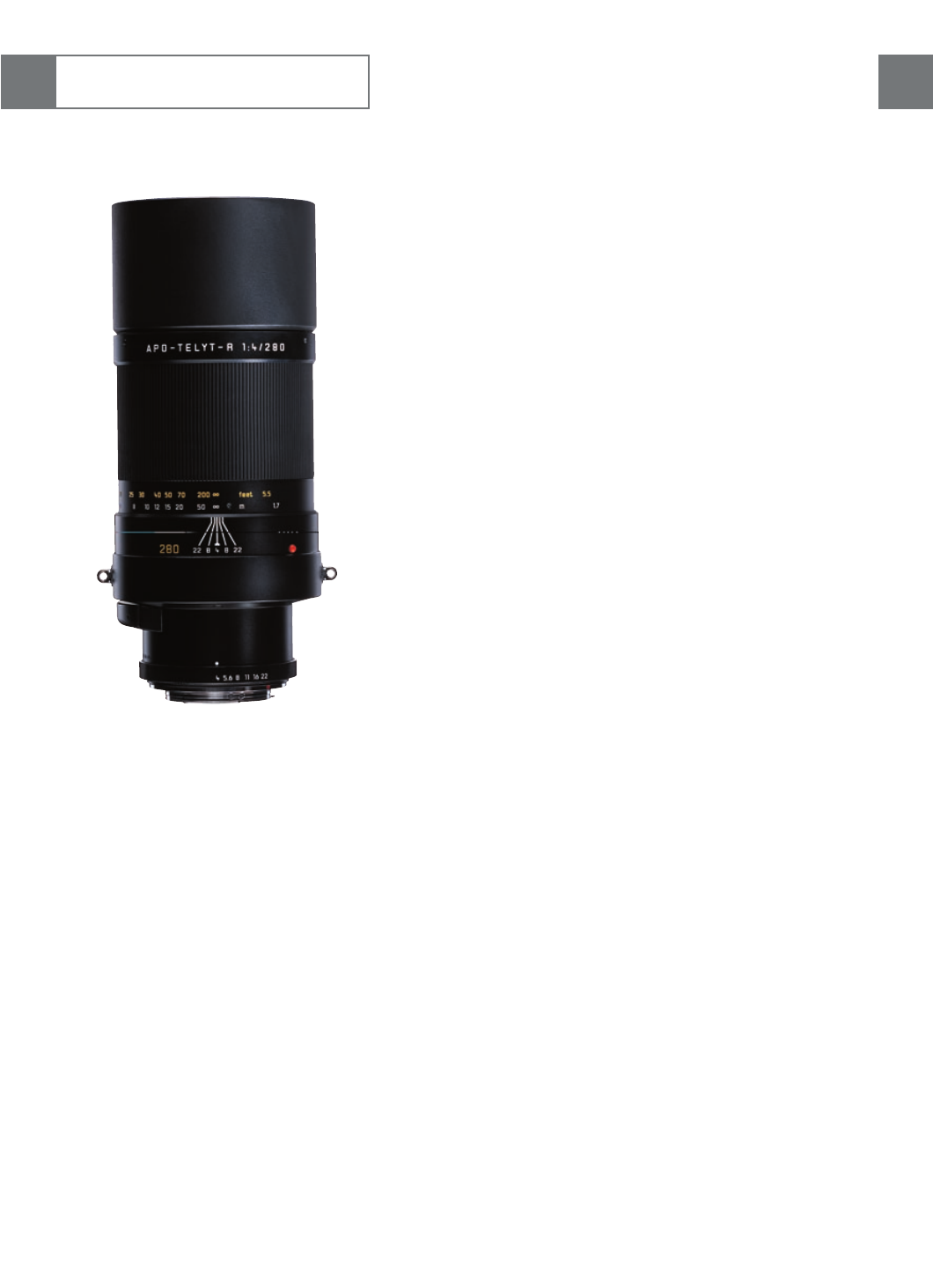
Chapter 3
Leica R-Lenses
3
In 1993 the 280 mm f/4 Apo-Telyt-R was introduced. Perfor-
mance was improved, especially in the outer zones; the weight
was reduced to 1875 grams (66.1 ounces) and the price ratio of
4.8:1 was much better.
In terms of performance, both new lenses, the 180 mm f/2.8
Apo-Elmarit-R and the 280 mm f/4 Apo-Telyt-R, are world-class
lenses and they represent the finest examples of the outstan-
ding excellence of the current quality of optical design at Leica
Camera AG.
__ Artistic considerations
Both lenses share essentially the same characteristics, but the
strongest visual effects can clearly be seen with the 280 mm
lens. Pictures with these lenses show the classical compressed
image: two cars in a row look as if they collided and many cars
acquire a new wedge shape. Pictures of groups of people look
like the paintings of people by Rembrandt.
We can explain this with a small experiment:
Let us photograph two objects of the same size that are located
one meter (3.28 feet) from each other at a distance from one
meter (3.28 feet) from the first object.
The second object is then twice as far away from the lens as
the first object. Therefore the second object will be seen and
reproduced at half the viewing angle of the first object.
It will be halved in linear size.
Now we move the camera to a distance of three meters (9.8
feet) from the first object. Now the viewing angle of the second
object is 3/4 of that of the first object.
The linear magnification is thus 3/4 of that of the first object.
Our brain assumes that large objects are always close to us.
As the second object has 'grown' from 1/2 to 3/4 the size of
the first object, we assume that it must now be closer to that
object.
This effect explains why telephoto lenses produce a compres-
sed or foreshortened perspective.
__ LEICA APO-TELYT-R 280 mm f/4













